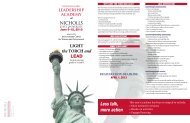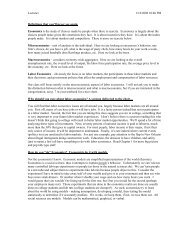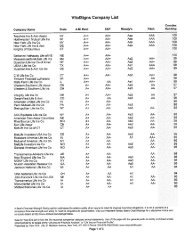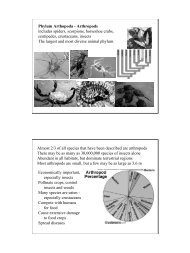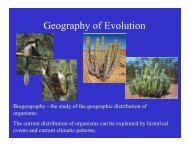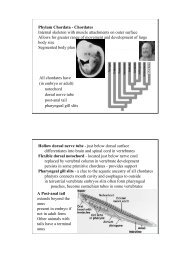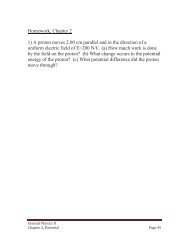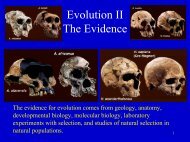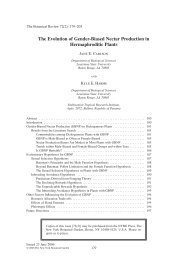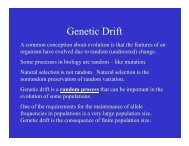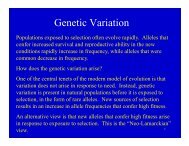Voila 2007 Fall (PDF) - Nicholls State University
Voila 2007 Fall (PDF) - Nicholls State University
Voila 2007 Fall (PDF) - Nicholls State University
You also want an ePaper? Increase the reach of your titles
YUMPU automatically turns print PDFs into web optimized ePapers that Google loves.
Shalonda Johnson, graduating sociology senior from<br />
Franklin, began contacting authors of past newspaper articles<br />
about St. Luke’s, with little luck. Diaquire Johnson, sociology<br />
senior from Bayou Dularge, set out to the Lafourche Parish<br />
Clerk of Court’s office to collect the church’s property records.<br />
Immediately, she also faced a challenge. No records could be<br />
found for a St. Luke’s Baptist Church on La. 20 in Chackbay.<br />
Through hours of Internet searching and perhaps a little<br />
luck, the students discovered the church’s dual name of St.<br />
Luke’s/Little Zion. That was news even to past members of its<br />
congregation.<br />
Johnson retrieved documents, under the name Little<br />
Zion, dating back to 1802<br />
at the initial subdivision<br />
of the church’s property,<br />
which she believes was part<br />
of Cleona Plantation. It’s<br />
hard to be sure, though,<br />
since all transactions were<br />
made in the name of private<br />
individuals. The church<br />
property still belongs to<br />
remaining members of the<br />
congregation. St. Luke’s was<br />
probably built soon after the<br />
deed was signed in 1883.<br />
Probably. Some mysteries<br />
still remain after a semester<br />
of searching, documenting<br />
and speculating.<br />
Gaining momentum<br />
Tina Granger, sociology<br />
junior from Houma,<br />
was connected to Shanklin<br />
through the Lafourche<br />
Historical Society. The<br />
two quickly began a ritual.<br />
Once a week, Granger and<br />
Shanklin met at Galliano<br />
Hall cafeteria to eat lunch<br />
and travel back in time.<br />
Shanklin brought family<br />
photos, genealogy charts<br />
and her memory. Granger<br />
brought an attentive ear.<br />
Both began filling in the blanks in the genealogy of<br />
Shanklin’s father, the Rev. Andrew W. Robinson. A genealogical<br />
chart Shanklin had from her great-grandfather Joseph Parks<br />
contributed tremendously. Records don’t make piecing history<br />
together easy, though. Names are often misspelled or change<br />
with time.<br />
In fact, Shanklin’s documents originally referenced her<br />
great-grandfather as Joseph Parr (a.k.a. Parks), which she<br />
simply brushes off as a spelling error. However, Granger isn’t so<br />
sure. Her maternal aunt married a Parr from Houma. His genealogy<br />
references the upper Lafourche area and causes Granger<br />
to wonder if there is a connection … if her Caucasian family<br />
may have African-American roots.<br />
“This is a treasure to me,” Granger says, grasping both genealogies<br />
in her hands. “With the knowledge that many slaves<br />
took the name of their masters, there may be a connection between<br />
my family and Mrs. Shanklin’s. During Reconstruction,<br />
many African-Americans changed their names, some slightly,<br />
some drastically, to dissociate from those times.”<br />
Granger and Shanklin plan to speak with other descendants<br />
at the Parks family reunion. Olinda Ricard, management<br />
senior from Killeen, Texas, has helped create a survey to<br />
gather more memories from those in attendance. St. Luke’s has<br />
become a personal mission for Granger. Regardless of whether<br />
a family connection exists<br />
or not, she is immersed in<br />
the project. More can and<br />
must be done. If nothing<br />
else is done, what will<br />
protect the remains of the<br />
church<br />
Research alone won’t<br />
cut it. On a trip to the<br />
church property, Shanklin<br />
and Granger find several<br />
candles arranged in a<br />
circle in the center of the<br />
building’s floor, perhaps<br />
from a ritual. When they<br />
return weeks later, the<br />
evidence is gone.<br />
Granger snaps her<br />
fingers. “The building<br />
could have gone up in<br />
flames just like that.<br />
There is nothing to stop<br />
trespassers. The front<br />
entrance is rotted through<br />
and through. Even I<br />
wouldn’t dare step into<br />
that building.”<br />
Preserving the past<br />
St. Luke’s has been<br />
abandoned since the<br />
1970s. Robinson retired,<br />
and his son-in-law, the<br />
Rev. Joe Woods, was asked to become pastor. However, Woods<br />
already had a church under his wing and asked St. Luke’s congregation<br />
to join him there. St. Luke’s entered what Granger<br />
refers to as its “winter years.”<br />
Yet on this April day, it is alive. Vehicles begin to fill the<br />
property in an unorganized, rushed fashion. Car doors slam<br />
and the chatter of the crowd grows louder. All visitors gather<br />
around the church entrance, waiting for the service to begin.<br />
The scene wasn’t so different 50 years ago – except for the<br />
sounds of gospel songs, organ music and prayer shouts, now<br />
replaced by the drone of a weed-eater, clicks of cameras and the<br />
rustle of garbage bags.<br />
More than 25 <strong>Nicholls</strong> sociology students split into groups<br />
St. Luke’s Baptist Church in Chackbay<br />
to begin the day’s work. Behind the church building lies the<br />
biggest challenge – a once serene graveyard now overtaken<br />
by wild woods. Beams of sunlight reveal the tops of crossshaped<br />
grave markers hidden for decades behind ferns and tree<br />
branches. Butler, clad in camouflaged pants, begins chopping<br />
down small trees as students rake up the debris and drag<br />
branches away from the 12 tombstones. Tomb etchings will<br />
be archived. Two belong to Annie and Sarah Parks, Shanklin’s<br />
grandmother and great-grandmother. Another resembles a<br />
child’s grave, though Shanklin has no memory of a burial for<br />
someone so young.<br />
Dameyel Welsch, history senior from Paradis, takes a break<br />
from cleaning the site: “You know, you don’t get an opportunity<br />
every day to reflect on the history of the area and your ancestors.<br />
It makes me think about my church. The First Baptist<br />
Church of Paradis probably started as a small church similar to<br />
this one. Many back then didn’t want black churches and believed<br />
that blacks didn’t have souls, but the slaves did what God<br />
told them to do. The legacy of the African-American slaves who<br />
first started these churches lives on through these churches.”<br />
Welsch wonders what will happen to St. Luke’s after the<br />
day’s work is over. Granger already has plans for that. The<br />
research manuscript required of the sociology students will<br />
be only the beginning. Granger will continue to work with<br />
Shanklin to produce a book, which will be sold to benefit the<br />
property’s upkeep and conservation. A brochure on the site will<br />
be created and distributed at local tourist commission offices.<br />
Video footage of the group’s work will be used in future sociology<br />
courses and in presentations at future research symposiums.<br />
A brick from the church’s foundation as well as a piece<br />
of siding will be archived. An application will also be presented<br />
to the Louisiana Historical Commission to declare St. Luke’s a<br />
historical landmark.<br />
“This project may go several years until the book is complete,<br />
but I will continue working privately with Mrs. Shanklin<br />
to make sure the church is properly preserved,” Granger says.<br />
Remembering the way things were<br />
Shanklin can see straight through the empty church. It’s<br />
not how it used to be. There were doors, of course. The area<br />
now covered in rotten boards and twigs used to be an entrance<br />
hall. The church bell has been stolen from the steeple. The<br />
pews, which each held about five people, are also gone. She<br />
remembers the coat and hat racks that hung on the walls, the<br />
mahogany piano that sat on the right side of the building and<br />
the pulpit at the church’s front.<br />
Intuitively, Shanklin always knew something would<br />
become of St. Luke’s. For years, she collected paperwork on the<br />
church from her relatives, even though she had not attended<br />
services there since her college days. The church often crept<br />
into her thoughts and became part of her prayers, especially<br />
during hurricane season. Shanklin, now a retired educator,<br />
couldn’t figure out why St. Luke’s didn’t fade from her memory.<br />
Now, she understands.<br />
Tombstones mark the passing of some of the church’s congregation. Left without a pastor, the remaining<br />
members drifted to other churches in the 1970s. Thus began the church’s “winter years.”<br />
22 | Voilà! 23 | Voilà!



